
High bay lighting is essential for illuminating large spaces such as warehouses, factories, and gymnasiums. However, the process of calculating the appropriate lighting levels can be complex. Many lighting contractors make common mistakes when using high bay lighting calculators, which can lead to inadequate or excessive lighting. This article will explore these common pitfalls and provide insights on how to avoid them, ensuring optimal lighting solutions for clients.
High bay lighting calculators are tools designed to assist contractors in determining the necessary light output for a given area. These calculators take into account various factors, including the height of the ceiling, the type of fixtures used, and the specific requirements of the space. However, a thorough understanding of how to use these calculators effectively is crucial.
One of the most prevalent misconceptions is that high bay lighting calculators provide a one-size-fits-all solution. In reality, each space has unique characteristics that must be considered. For instance, a warehouse with reflective surfaces may require different calculations than a gymnasium with matte finishes. Understanding these nuances is vital for accurate lighting design.
Additionally, many people overlook the impact of the color temperature of the lighting fixtures. Different color temperatures can create varying atmospheres and affect the perceived brightness of a space. For example, cooler temperatures (around 5000K) are often preferred in industrial settings for their clarity and energy, while warmer temperatures (around 3000K) may be more suitable for areas where comfort and ambiance are prioritized, such as retail environments. Thus, selecting the right color temperature is an essential part of the lighting design process that should not be underestimated.
Another common mistake is neglecting to take precise measurements of the space. Accurate measurements of the ceiling height, floor area, and any obstructions are essential for effective calculations. Even minor errors in measurement can lead to significant discrepancies in the final lighting design, resulting in either insufficient light or unnecessary energy costs.
Furthermore, it is important to consider the layout of the fixtures themselves. The spacing between lights can greatly influence the overall illumination and uniformity of the light distribution. For instance, fixtures that are too far apart may create dark spots, while those that are too close can lead to glare and discomfort. Understanding the optimal placement of fixtures based on the specific dimensions and usage of the space is key to achieving an efficient and effective lighting solution. This careful planning not only enhances visibility but also contributes to the overall safety and productivity of the environment.
High bay lighting calculations involve several variables that can significantly impact the outcome. Contractors often overlook these variables, leading to suboptimal lighting solutions.
Ceiling height plays a crucial role in determining the type of fixtures to use and the spacing between them. High ceilings may require more powerful fixtures or different beam angles to ensure even light distribution. Failing to consider the height can lead to dark spots or overly bright areas, creating an uncomfortable environment for occupants. Additionally, the choice of fixture type—whether LED, fluorescent, or metal halide—can further influence the lighting quality and energy efficiency. For instance, LED fixtures not only provide better longevity and lower energy consumption but also offer a variety of color temperatures that can enhance the visual appeal of the space.
Another variable that is frequently overlooked is the ambient light conditions of the space. Natural light sources, such as windows or skylights, can affect the overall lighting needs. Contractors must assess how much natural light enters the space and adjust their calculations accordingly. Ignoring ambient light can lead to over-illumination, which not only wastes energy but can also cause glare and discomfort. Furthermore, the time of day and seasonal changes can also influence the amount of natural light available, making it essential for contractors to consider these factors in their designs. By integrating daylight harvesting techniques, such as dimmable fixtures or sensors that adjust lighting based on the amount of natural light, contractors can create a more sustainable and comfortable environment that adapts to varying conditions throughout the day.
In today’s environmentally conscious world, energy efficiency is a critical consideration in lighting design. Many contractors make the mistake of focusing solely on the initial lighting output without considering the long-term energy costs. This oversight not only affects the client’s budget but also contributes to unnecessary energy consumption, which can have a detrimental impact on the environment. As awareness of climate change grows, clients are increasingly seeking sustainable solutions that minimize their carbon footprint, making energy efficiency a vital aspect of modern lighting projects.
When selecting fixtures for high bay lighting, it is essential to choose energy-efficient options. LED fixtures, for instance, offer significant energy savings compared to traditional options like metal halide or fluorescent lights. Contractors should evaluate the lifecycle cost of fixtures, including maintenance and energy consumption, to provide clients with the most cost-effective solutions. Additionally, the longevity of LED fixtures means less frequent replacements, which not only reduces waste but also lessens the environmental impact associated with manufacturing and disposing of lighting products. By opting for high-quality, energy-efficient fixtures, contractors can help clients achieve both financial savings and a greener footprint.
Incorporating smart lighting controls can further enhance energy efficiency. These systems allow for dimming, scheduling, and occupancy sensing, ensuring that lights are only used when needed. However, some contractors may overlook these technologies, resulting in higher energy bills for clients. Understanding and implementing these controls can lead to significant savings over time. Furthermore, smart lighting systems can be integrated with other building management systems, creating a cohesive approach to energy management. This integration can provide real-time data on energy usage, allowing for proactive adjustments and further optimization of energy consumption. As technology continues to advance, staying informed about the latest innovations in smart lighting can give contractors a competitive edge while delivering exceptional value to their clients.
Lighting contractors must be aware of the various regulatory standards and guidelines that govern lighting design. Ignoring these regulations can result in non-compliance, leading to potential fines or project delays.
Each jurisdiction has its own building codes that dictate minimum lighting levels for different types of spaces. Contractors should familiarize themselves with these codes to ensure that their designs meet the necessary requirements. Failure to comply can result in costly rework and project setbacks.
In addition to local codes, industry standards such as those set by the Illuminating Engineering Society (IES) provide valuable guidelines for lighting design. These standards outline recommended illuminance levels for various applications, helping contractors create safe and functional environments. Ignoring these standards can compromise the quality of the lighting design and the safety of the space.
Maintenance is a critical aspect of any lighting installation, yet it is often underestimated during the design phase. Contractors should consider how easy it will be to maintain the lighting system over time.
When selecting high bay fixtures, contractors must consider their accessibility for maintenance. Fixtures installed at great heights may require specialized equipment for replacement or repair, leading to increased maintenance costs. Designing for accessibility can save clients time and money in the long run.
The lifespan of the chosen fixtures is another important factor. LED fixtures, for example, have a longer lifespan than traditional options, reducing the frequency of replacements. Contractors should educate clients on the benefits of investing in durable lighting solutions that minimize maintenance needs and associated costs.
Effective communication with clients is essential for successful lighting design. Contractors often make the mistake of not fully consulting with clients to understand their specific needs and preferences.
Each client may have different expectations regarding lighting aesthetics, functionality, and energy efficiency. Engaging in open discussions allows contractors to gather valuable insights that can inform their design choices. Ignoring client input can lead to dissatisfaction and potential rework.
Contractors should also take the time to educate clients about the lighting options available to them. Providing clear recommendations based on the client’s needs can help build trust and ensure that the final solution aligns with their vision. This collaborative approach can lead to more successful projects and satisfied clients.
While high bay lighting calculators provide a useful starting point, contractors should not rely solely on these tools. Advanced calculation methods can yield more accurate results and enhance the overall design process.
Lighting simulation software allows contractors to visualize how different lighting designs will perform in a given space. By inputting various parameters, contractors can see how light interacts with surfaces and identify potential issues before installation. This proactive approach can save time and resources while ensuring optimal lighting outcomes.
Photometric analysis involves measuring the light output of fixtures and how it distributes throughout the space. This analysis can help contractors fine-tune their designs and ensure even illumination. By incorporating photometric data into the design process, contractors can make informed decisions that enhance the quality of the lighting installation.
High bay lighting calculators are valuable tools for lighting contractors, but they come with their own set of challenges. By understanding the common mistakes associated with these calculators, contractors can improve their design processes and deliver better results for their clients. Key considerations include accurate measurements, energy efficiency, regulatory compliance, maintenance planning, and effective communication with clients.
By avoiding these pitfalls and utilizing advanced calculation methods, contractors can create lighting solutions that not only meet but exceed client expectations. The result is a well-lit space that enhances productivity, safety, and overall satisfaction.
Ultimately, a thorough understanding of high bay lighting design, coupled with a commitment to continuous improvement, will empower lighting contractors to achieve success in their projects and foster lasting relationships with their clients.
Ready to elevate your high bay lighting projects with superior quality and unbeatable value? Look no further than LumenWholesale, where we specialize in providing spec-grade lighting products at wholesale prices. Our commitment to cutting out the middleman means you get the best value without the inflated markups. With our extensive selection that meets the highest industry standards, you can trust that your lighting solutions will be reliable and high-performing. Plus, our hassle-free bulk buying with free shipping ensures you receive premium lighting at the best price, with no hidden fees. Don’t compromise on quality, affordability, or convenience. Choose LumenWholesale for your next project and experience the perfect blend of all three. Wholesale Lighting at the Best Value is just a click away.
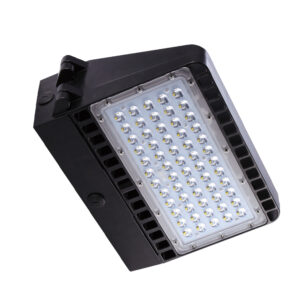
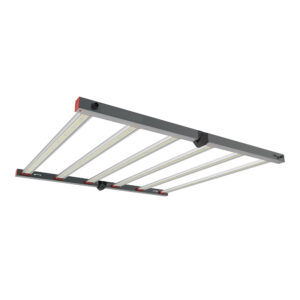
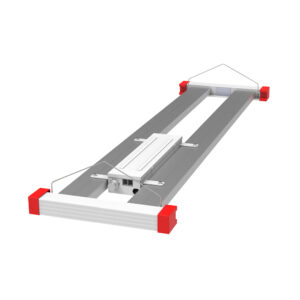
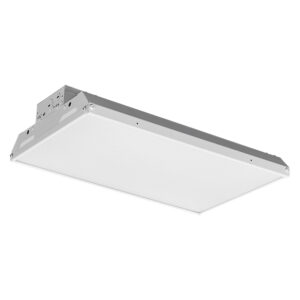
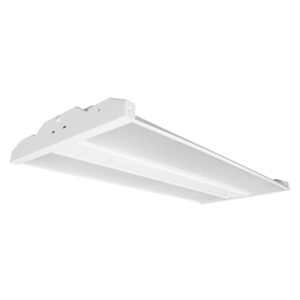
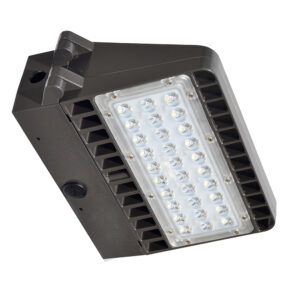

Discover the essential transition from HID to LED street lighting and why it’s crucial for lighting contractors.

Discover the essential insights lighting contractors need to know about wall sconces, from design trends to installation tips, ensuring your projects shine with both style and functionality..

Discover how industrial pendant lighting can significantly cut costs for lighting contractors.

Discover expert tips and insights on selecting and installing LED factory lights tailored for lighting contractors.
Get notified when NEW deals are released.
Optimize your budget with wholesale discounts.
Only top-quality, specification-grade lighting products.
No additional costs at checkout - what you see is what you pay.
We understand the unique needs of contractors.